
Do you have a question about the Honda Forza NSS300 2013 and is the answer not in the manual?
| Displacement | 279 cc |
|---|---|
| Compression Ratio | 10.5:1 |
| Fuel System | PGM-FI electronic fuel injection |
| Ignition | Computer-controlled digital transistorized with electronic advance |
| Transmission | Automatic V-Matic belt drive |
| Front Tire | 120/70-14 |
| Rear Tire | 140/70-13 |
| ABS | Optional |
| Engine Type | Liquid-cooled, 4-stroke, single-cylinder |
| Front Suspension | 33mm telescopic fork |
| Rear Suspension | Twin shock |
| Front Brake | Single 256 mm disc |
| Rear Brake | Single 240mm disc |
| Wheelbase | 60.9 inches |
| Seat Height | 28.2 inches |
| Width | 29.7 inches |
| Curb Weight | 192 kg (423 lbs) |
Lists country codes used in the manual for different regions and scooter models.
Provides essential guidelines to enhance rider and passenger safety.
Explains the meanings and importance of various safety and informational labels on the scooter.
Details crucial precautions for safe operation, including protective apparel.
Outlines precautions for operating the scooter safely under various conditions.
Advises against unauthorized accessories and modifications that could compromise safety or warranty.
Provides guidelines on carrying loads, weight limits, and secure luggage placement.
Identifies and illustrates the location of various parts and components on the scooter.
Explains the functionality and display of the odometer and tripmeter readings.
Provides instructions on how to set the scooter's clock display.
Details how to view and reset the average fuel consumption readings.
Explains the PGM-FI malfunction indicator lamp and its implications for the engine system.
Describes the Anti-lock Brake System indicator and its behavior during operation.
Details the low oil pressure indicator, its meaning, and necessary actions.
Explains the Honda Ignition Security System (HISS) indicator and its functions.
Describes the oil change indicator and the procedure for resetting it.
Explains the function and proper use of the engine stop switch.
Details the operation of the starter button for the engine.
Explains the operation of the hazard warning lights.
Provides instructions on how to lock the steering for security and theft prevention.
Describes the shutter mechanism for the ignition switch for theft prevention.
Step-by-step procedure for starting the scooter's engine safely.
Guide on how to safely start moving the scooter from a standstill.
Explains how to control speed using the throttle for acceleration and deceleration.
Instructions on how to access and open the fuel filler cap.
Procedure for securely closing the fuel filler cap after refueling.
Instructions for opening and closing the scooter's seat for storage access.
Describes the location and use of the helmet holder under the seat.
Information on the capacity and usage of the luggage box.
Details on opening, closing, and load limits for the left fairing pocket.
Details on opening, closing, and load limits for the right fairing pocket.
Information on the accessory socket's location, capacity, and usage precautions.
Explains why regular maintenance is crucial for safety and scooter longevity.
Outlines the recommended maintenance intervals and tasks for the scooter.
Provides basic principles and procedures for performing maintenance tasks.
Lists the tools provided with the scooter for basic maintenance and repairs.
Guides on safely removing and reinstalling various body parts for access.
Covers checking, adding, and changing the engine oil and filter.
Instructions for checking, adding, and changing the engine coolant.
Details on checking brake fluid level and brake pad wear.
Explains how to check and maintain the side stand's operation.
Covers checking the throttle operation and freeplay for smooth response.
Describes how to adjust rear suspension spring preload and headlight aim.
Addresses issues when the engine fails to start, including HISS indicator problems.
Discusses symptoms and procedures for dealing with engine overheating.
Explains various warning lights and indicators on the dashboard.
Guidance on dealing with tyre punctures and emergency repairs.
Covers common electrical issues like dead batteries, blown fuses, and burnt-out bulbs.
Information about the ignition key, HISS system, and duplicate key procedures.
Details on the ignition switch, engine stop switch, and other control features.
Guidelines on using fuels blended with alcohol and potential effects.
Information on the scooter's catalytic converter and how to protect it.
Advice on cleaning, polishing, and protecting the scooter's exterior.
Guidelines for storing the scooter properly for extended periods.
Instructions on how to safely transport the scooter using trailers or trucks.
Information on environmentally friendly cleaning and waste disposal practices.
Location and importance of the frame and engine serial numbers.
Key specifications and dimensions of the scooter's main components.
Technical data including tyre specifications, spark plug gap, and fluid capacities.
Specifications for the types and wattages of various bulbs used on the scooter.
Details on the amperage ratings for the main and other fuses.
Recommended torque values for critical fasteners like engine oil drain bolt and oil filter.

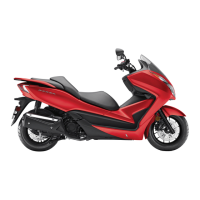


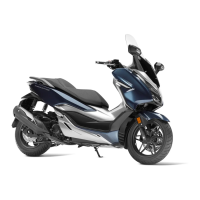
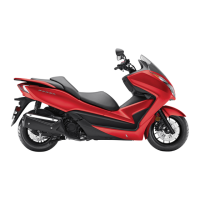

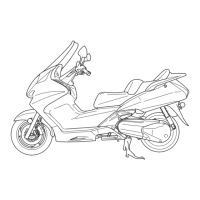
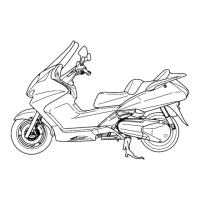
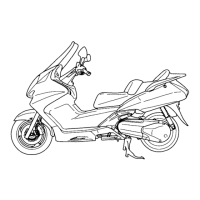
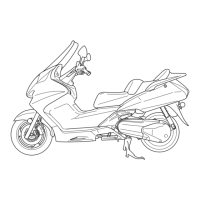
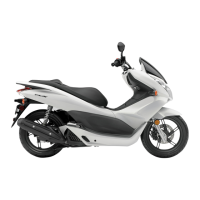
